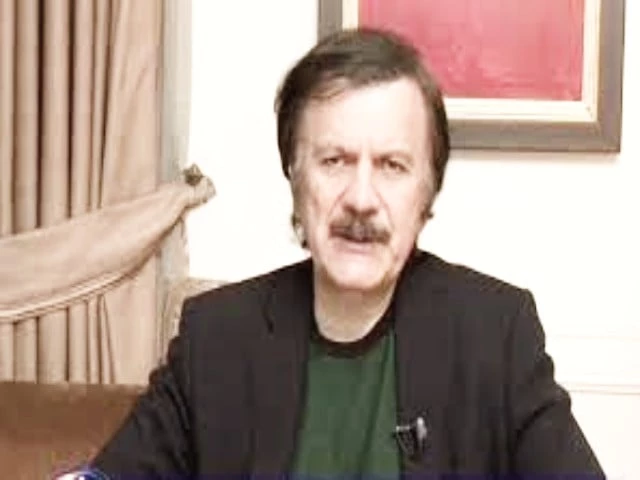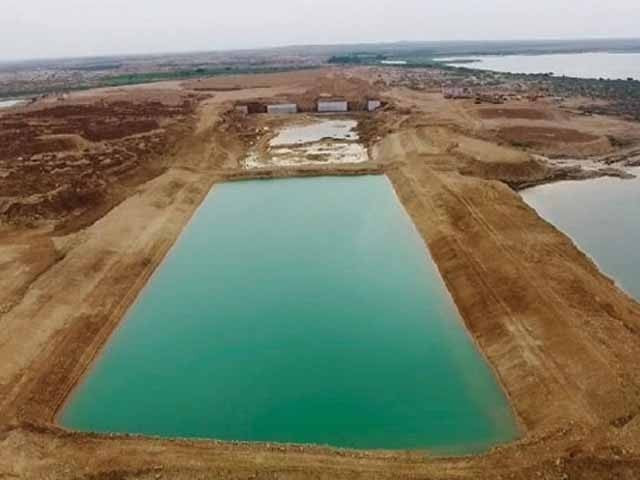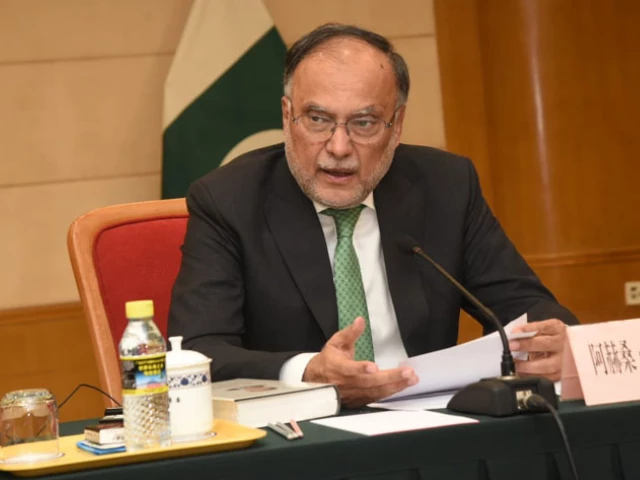Business
The vaccine and public health debate at the center of CDC upheaval, explained

The exterior of the Center for Disease Control and Prevention (CDC) main campus in Atlanta, Georgia, U.S., Aug. 27, 2025.
Alyssa Pointer | Reuters
The Centers for Disease Control and Prevention is facing a leadership upheaval — and at the center of the shakeup is concern about the agency’s approach to vaccines and U.S. public health.
The White House on Thursday said President Donald Trump had fired CDC Director Susan Monarez after she refused to resign. Lawyers for Monarez said she was “targeted” for “protecting the public over serving a political agenda.”
Meanwhile, four other top health officials at the CDC announced Wednesday they were quitting the agency. That includes Demetre Daskalakis, director of the National Center for Immunization and Respiratory Diseases, who said he could no longer serve because of the “weaponizing of public health.”
Former Centers for Disease Control and Prevention (CDC) Chief Medical Officer Debra Houry, former National Center for Immunization and Respiratory Diseases Director Demetre Daskalakis, and former National Center for Emerging and Zoonotic Infectious Diseases Director Daniel Jernigan hold flowers and react after they appeared during a protest, a day after the White House fired CDC director Susan Monarez and several top officials resigned, in Atlanta, Georgia, U.S., Aug. 28, 2025.
Alyssa Pointer | Reuters
The loss of those respected leaders and efforts to oust Monarez follow a string of measures by Health and Human Services Secretary Robert F. Kennedy Jr. – a prominent vaccine skeptic – to overhaul federal health agencies and change immunization policy in the U.S. That includes mass firings, gutting a key government vaccine panel, canceling studies on mRNA shot technology and hiring those with like-minded views.
Kennedy has a long track record of making misleading and false statements about the safety of vaccine shots, but in his current role, he wields enormous power over the agencies that regulate the immunizations and determine both who can get them and which ones insurance plans should cover.
Dr. Georges Benjamin, executive director of the American Public Health Association, said the leadership overhaul at the CDC represents Kennedy’s “failed leadership and reckless mismanagement,” adding that he has a “blatant disregard for science and evidence-based public health.”
The agency is also reeling from funding cuts and an Aug. 8 attack by a gunman at its headquarters in Atlanta.
Some health policy experts said the leadership exodus could further erode the public’s trust in an agency that is responsible for detecting disease outbreaks and guiding state and local health departments when needed.
“This has to be seen on top of a raft of ways that CDC has been weakened and undermined, maybe irreversibly,” Lawrence Gostin, professor of public health law at Georgetown University, told CNBC.
“Throughout all of those years, CDC has been independent and the jewel in the crown of American science. That’s literally all crumbling as we speak,” he said. “This is almost the definition of politics undermining science.”
Top official highlights vaccine concerns
Daskalakis was among the officials to explicitly highlight concerns with the views held by Kennedy and his staff, which he said challenged his ability to continue in his role at the agency.
“I am unable to serve in an environment that treats CDC as a tool to generate policies and materials that do not reflect scientific reality and are designed to hurt rather than to improve the public’s health,” Daskalakis said in his resignation letter, which was posted on X.
He said the CDC’s recent changes to the adult and children’s immunization schedule “threaten the lives of the youngest Americans and pregnant people.”
High-ranking members of the Centers for Disease Control and Prevention (CDC), dressed in uniform, salute former CDC Chief Medical Officer Debra Houry, former National Center for Immunization and Respiratory Diseases Director Demetre Daskalakis, and former National Center for Emerging and Zoonotic Infectious Diseases Director Daniel Jernigan, a day after the White House fired CDC Director Susan Monarez and several top officials resigned, in Atlanta, Georgia, U.S., Aug. 28, 2025.
Alyssa Pointer | Reuters
In May, Kennedy said the CDC removed Covid vaccines from the list of shots recommended for healthy pregnant women and children. An updated guidance days later said shots “may” be given to those groups.
Daskalakis said the data analyses that supported the change have “never been shared with the CDC despite my respectful requests to HHS and other leadership.” He also said HHS circulated a “frequently asked questions” document written to support Kennedy’s decision without input from CDC subject matter experts, and that it cited studies “that did not support the conclusions that were attributed to these authors.”
On Wednesday, the Food and Drug Administration approved the latest round of Covid vaccines only for those at higher risk of serious illness, marking another shift in policy around those shots since the pandemic began.
Shares of Covid vaccine makers dipped on Thursday. Moderna’s stock fell more than 3%, while shares of Pfizer fell around 2%.
Those companies and other drugmakers have been bracing for changes to vaccine and public health policy since Trump first named Kennedy as his pick to lead HHS in November. The CDC’s leadership shakeup only adds to the uncertainty in the pharmaceutical industry, which is also grappling with Trump’s drug pricing policies.
Kennedy tried to distance himself from his previous views about vaccines and other health policies during his Senate confirmation hearings back in January, claiming that he isn’t “anti-vaccine” and would not make it “difficult or discourage people from taking” routine shots for measles and polio.
But some of Kennedy’s recent efforts appear to reflect his vaccine-critical views. For example, Kennedy in August argued that mRNA vaccines – the technology used in Covid shots – are ineffective and advocated for the development of other jabs that use other “safer” platforms.
Years of research support the effectiveness of mRNA Covid vaccines, and the technology is now approved for use in shots against respiratory syncytial virus.
Threat to public health
Former National Center for Immunization and Respiratory Diseases Director Demetre Daskalakis, next to former National Center for Emerging and Zoonotic Infectious Diseases Director Daniel Jernigan, speaks to the media during a protest, a day after the White House fired CDC director Susan Monarez and several top officials resigned, in Atlanta, Georgia, U.S., Aug. 28, 2025.
Alyssa Pointer | Reuters
As changes roll through the CDC, concerns over a threat to public health and protocol are growing.
Daskalakis slammed the means by which HHS and other CDC leadership have communicated major policy changes. For example, Kennedy announced he was firing the entirety of the Advisory Committee on Immunization Practices – a panel of vaccine advisors to the CDC – through an X post and op-ed “rather than direct communication with these valuable experts,” Daskalakis said.
He said he believed there would be an opportunity to brief Kennedy on key topics such as measles, avian influenza and the approach to the respiratory virus season. But Daskalakis said seven months into the new administration, no CDC subject matter expert from his center had briefed Kennedy.
“I am not sure who the Secretary is listening to, but it is quite certainly not to us,” he said. “Unvetted and conflicted outside organizations seem to be the sources HHS use over the gold standard science of CDC and other reputable sources.”
Former Centers for Disease Control and Prevention (CDC) Chief Medical Officer Debra Houry, followed by former National Center for Immunization and Respiratory Diseases Director Demetre Daskalakis, and former National Center for Emerging and Zoonotic Infectious Diseases Director Daniel Jernigan, reacts during a protest, a day after the White House fired CDC director Susan Monarez and several top officials resigned, in Atlanta, Georgia, U.S., Aug. 28, 2025.
Alyssa Pointer | Reuters
Dr. Debra Houry, who also resigned Wednesday from her post as the CDC’s chief medical officer, similarly said that senior leaders “never were able to brief the Secretary” on any of the issues the agency deals with.
“The CDC scientists are top notch and excellent,” she told MSNBC in an interview. “What we would actually have preferred was to have more interactions with the secretary.”
Houry added that “over the past few months, things at the CDC have been really difficult when it comes to having science and data driven decisions.”
As longtime experts leave the CDC, the threat of infectious diseases is growing. While measles cases are ticking up in the U.S. again, bird flu is spreading in cattle. The first human case of the flesh-eating parasite “New World screwworm” has been detected in the country.
The departures could “make our public health less assured,” Benjamin of the American Public Health Association said.
Susan Monarez, U.S. President Donald Trump’s nominee to be director of the Centers for Disease Control and Prevention, testifies before a Senate Health, Education, Labor, and Pensions Committee confirmation hearing on Capitol Hill in Washington, D.C., U.S., June 25, 2025.
Kevin Mohatt | Reuters
He said the leadership disruption also raises concerns about the nation’s ability to detect and respond to an emerging infectious disease spreading because the CDC is the “glue that holds” individual doctors and state and local health departments together.
“I am worried that we won’t know in time, and that we’ll be chasing that disease for far longer than we should,” Benjamin said.
Benjamin said he has “little confidence” that the Trump administration will find someone “highly competent” with relevant experience to replace Monarez.
“It obviously all has enormous implications for the health and well being of the public, and enormous implications around the finances of our nation,” he said. “Prevention and wellness saves us money, and public health is the best buy.”
Business
South Korea: Online retail giant Coupang hit by massive data leak

Osmond ChiaBusiness reporter
 Getty Images
Getty ImagesSouth Korea’s largest online retailer, Coupang, has apologised for a massive data breach potentially involving nearly 34 million local customer accounts.
The country’s internet authority said that it is investigating the breach and that details from the millions of accounts have likely been exposed.
Coupang is often described as South Korea’s equivalent of Amazon.com. The breach marks the latest in a series of data leaks at major firms in the country, including its telecommunications giant, SK Telecom.
Coupang told the BBC it became aware of the unauthorised access of personal data of about 4,500 customer accounts on 18 November and immediately reported it to the authorities.
But later checks found that some 33.7 million customer accounts – all in South Korea – were likely exposed, said Coupang, adding that the breach is believed to have begun as early as June through a server based overseas.
The exposed data is limited to name, email address, phone number, shipping address and some order histories, Coupang said.
No credit card information or login credentials were leaked. Those details remain securely protected and no action is required from Coupang users at this point, the firm added.
The number of accounts affected by the incident represents more than half of South Korea’s roughly-52 million population.
Coupang, which is founded in South Korea and headquartered in the US, said recently that it had nearly 25 million active users.
Coupang apologised to its customers and warned them to stay alert to scams impersonating the company.
The firm did not give details on who is behind the breach.
South Korean media outlets reported on Sunday that a former Coupang employee from China was suspected of being behind the breach.
The authorities are assessing the scale of the breach as well as whether Coupang had broken any data protection safety rules, South Korea’s Ministry of Science and ICT said in a statement.
“As the breach involves the contact details and addresses of a large number of citizens, the Commission plans to conduct a swift investigation and impose strict sanctions if it finds a violation of the duty to implement safety measures under the Protection Act.”
The incident marks the latest in a series of breaches affecting major South Korean companies this year, despite the country’s reputation for stringent data privacy rules.
SK Telecom, South Korea’s largest mobile operator, was fined nearly $100m (£76m) over a data breach involving more than 20 million subscribers.
In September, Lotte Cards also said the data of nearly three million customers was leaked after a cyber-attack on the credit card firm.
Business
Pakistan’s crisis differs from world | The Express Tribune
1729471601-0/image-(8)1729471601-0-640x480.webp)
Multiple elite clusters capture system as each extracts benefits in different ways
Pakistan’s ruling elite reinforces a blind nationalism, promoting the belief that the country does not need to learn from developed or emerging economies, as this serves their interests. PHOTO: FILE
KARACHI:
Elite capture is hardly a unique Pakistani phenomenon. Across developing economies – from Latin America to Sub-Saharan Africa and parts of South Asia – political and economic systems are often influenced, shaped, or quietly commandeered by narrow interest groups.
However, the latest IMF analysis of Pakistan’s political economy highlights a deeper, more entrenched strain of elite capture; one that is broader in composition, more durable in structure, and more corrosive in its fiscal consequences than what is commonly observed elsewhere. This difference matters because it shapes why repeated reform cycles have failed, why tax bases remain narrow, and why the state repeatedly slips back into crisis despite bailouts, stabilisation efforts, and policy resets.
Globally, elite capture typically operates through predictable channels: regulatory manipulation, favourable credit allocation, public-sector appointments, or preferential access to state contracts. In most emerging economies, these practices tend to be dominated by one or two elite blocs; often oligarchic business families or entrenched political networks.
In contrast, Pakistan’s system is not captured by a single group but by multiple competing elite clusters – military, political dynasties, large landholders, protected industrial lobbies, and urban commercial networks; each extracting benefits in different forms. Instead of acting as a unified oligarchic class, these groups engage in a form of competitive extraction, amplifying inefficiencies and leaving the state structurally weak.
The IMF’s identification of this fragmentation is crucial. Unlike countries where the dominant elite at least maintains a degree of policy coherence, such as Vietnam’s party-led model or Turkiye’s centralised political-business nexus, Pakistan’s fragmentation results in incoherent, stop-start economic governance, with every reform initiative caught in the crossfire of competing privileges.
For example, tax exemptions continue to favour both agricultural landholders and protected sectors despite broad consensus on the inefficiencies they generate. Meanwhile, state-owned enterprises continue to drain the budget due to overlapping political and bureaucratic interests that resist restructuring. These dynamics create a fiscal environment where adjustment becomes politically costly and therefore systematically delayed.
Another distinguishing characteristic is the fiscal footprint of elite capture in Pakistan. While elite influence is global, its measurable impact on Pakistan’s budget is unusually pronounced. Regressive tax structures, preferential energy tariffs, subsidised credit lines for favoured industries, and the persistent shielding of large informal commercial segments combine to erode the state’s revenue base.
The result is dependency on external financing and an inability to build buffers. Where other developing economies have expanded domestic taxation after crises, like Indonesia after the Asian financial crisis, Pakistan’s tax-to-GDP ratio has stagnated or deteriorated, repeatedly offset by politically negotiated exemptions.
Moreover, unlike countries where elite capture operates primarily through economic levers, Pakistan’s structure is intensely politico-establishment in design. This tri-layer configuration creates an institutional rigidity that is difficult to unwind. The civil-military imbalance limits parliamentary oversight of fiscal decisions, political fragmentation obstructs legislative reform, and bureaucratic inertia prevents implementation, even when policies are designed effectively.
In many ways, Pakistan’s challenge is not just elite capture; it is elite entanglement, where power is diffused, yet collectively resistant to change. Given these distinctions, the solutions cannot simply mimic generic reform templates applied in other developing economies. Pakistan requires a sequenced, politically aware reform agenda that aligns incentives rather than assuming an unrealistic national consensus.
First, broadening the tax base must be anchored in institutional credibility rather than coercion. The state has historically attempted forced compliance but has not invested in digitalisation, transparent tax administration, and trusted grievance mechanisms. Countries like Rwanda and Georgia demonstrate that tax reforms succeed only when the system is depersonalised and automated. Pakistan’s current reforms must similarly prioritise structural modernisation over episodic revenue drives.
Second, rationalising subsidies and preferential tariffs requires a political bargain that recognises the diversity of elite interests. Phasing out energy subsidies for specific sectors should be accompanied by productivity-linked support, time-bound transition windows, and export-competitiveness incentives. This shifts the debate from entitlement to performance, making reform politically feasible.
Third, Pakistan must reduce its SOE burden through a dual-track programme: commercial restructuring where feasible and privatisation or liquidation where not. Many countries, including Brazil and Malaysia, have stabilised finances by ring-fencing SOE losses. Pakistan needs a professional, autonomous holding company structure like Singapore’s Temasek to depoliticise SOE governance.
Fourth, politico-establishment reform is essential but must be approached through institutional incentives rather than confrontation. The creation of unified economic decision-making forums with transparent minutes, parliamentary reporting, and performance audits can gradually rebalance power. The goal is not confrontation, but alignment of national economic priorities with institutional roles.
Finally, political stability is the foundational prerequisite. Long-term reform cannot coexist with cyclical political resets. Countries that broke elite capture, such as South Korea in the 1960s or Indonesia in the 2000s, did so through sustained, multi-year policy continuity.
What differentiates Pakistan is not the existence of elite capture but its multi-polar, deeply institutionalised, fiscally destructive form. Yet this does not make reform impossible. It simply means the solutions must reflect the structural specificity of Pakistan’s governance. Undoing entrenched capture requires neither revolutionary rhetoric nor unrealistic expectations but a deliberate recalibration of incentives, institutions, and political alignments. Only through such a pragmatic approach can Pakistan shift from chronic crisis management to genuine economic renewal.
The writer is a financial market enthusiast and is associated with Pakistan’s stocks, commodities and emerging technology
Business
India’s $5 Trillion Economy Push Explained: Why Modi Govt Wants To Merge 12 Banks Into 4 Mega ‘World-Class’ Lending Giants

India’s Public Sector Banks Merger: The Centre is mulling over consolidating public-sector banks, and officials involved in the process say the long-term plan could eventually bring down the number of state-owned lenders from 12 to possibly just 4. The goal is to build a banking system that is large enough in scale, has deeper capital strength and is prepared to meet the credit needs of a fast-growing economy.
The minister explained that bigger banks are better equipped to support large-scale lending and long-term projects. “The country’s economy is moving rapidly toward the $5 trillion mark. The government is active in building bigger banks that can meet rising requirements,” she said.
Why India Wants Larger Banks
Sitharaman recently confirmed that the government and the Reserve Bank of India have already begun detailed conversations on another round of mergers. She said the focus is on creating “world-class” banks that can support India’s expanding industries, rising infrastructure investments and overall credit demand.
She clarified that this is not only about merging institutions. The government and RBI are working on strengthening the entire banking ecosystem so that banks grow naturally and operate in a stable environment.
According to her, the core aim is to build stronger, more efficient and globally competitive banks that can help sustain India’s growth momentum.
At present, the country has a total of 12 public sector banks: the State Bank of India (SBI), the Punjab National Bank (PNB), the Bank of Baroda, the Canara Bank, the Union Bank of India, the Bank of India, the Indian Bank, the Central Bank of India, the Indian Overseas Bank (IOB) and the UCO Bank.
What Happens To Employees After Merger?
Whenever bank mergers are discussed, employees become anxious. A merger does not only combine balance sheets; it also brings together different work cultures, internal systems and employee expectations.
In the 1990s and early 2000s, several mergers caused discomfort among staff, including dissatisfaction over new roles, delayed promotions and uncertainty about reporting structures. Some officers who were promoted before mergers found their seniority diluted afterward, which created further frustration.
The finance minister addressed the concerns, saying that the government and the RBI are working together on the merger plan. She stressed that earlier rounds of consolidation had been successful. She added that the country now needs large, global-quality banks “where every customer issue can be resolved”. The focus, she said, is firmly on building world-class institutions.
‘No Layoffs, No Branch Closures’
She made one point unambiguous: no employee will lose their job due to the upcoming merger phase. She said that mergers are part of a natural process of strengthening banks, and this will not affect job security.
She also assured that no branches will be closed and no bank will be shut down as part of the consolidation exercise.
India last carried out a major consolidation drive in 2019-20, reducing the number of public-sector banks from 21 to 12. That round improved the financial health of many lenders.
With the government preparing for the next phase, the goal is clear. India wants large and reliable banks that can support a rapidly growing economy and meet the needs of a country expanding faster than ever.
-

 Sports7 days ago
Sports7 days agoWATCH: Ronaldo scores spectacular bicycle kick
-

 Entertainment7 days ago
Entertainment7 days agoWelcome to Derry’ episode 5 delivers shocking twist
-

 Politics7 days ago
Politics7 days agoWashington and Kyiv Stress Any Peace Deal Must Fully Respect Ukraine’s Sovereignty
-

 Business1 week ago
Business1 week agoKey economic data and trends that will shape Rachel Reeves’ Budget
-

 Tech5 days ago
Tech5 days agoWake Up—the Best Black Friday Mattress Sales Are Here
-

 Fashion7 days ago
Fashion7 days agoCanada’s Lululemon unveils team Canada kit for Milano Cortina 2026
-

 Politics1 week ago
Politics1 week ago53,000 Sikhs vote in Ottawa Khalistan Referendum amid Carney-Modi trade talks scrutiny
-

 Tech5 days ago
Tech5 days agoThe Alienware Aurora Gaming Desktop Punches Above Its Weight









